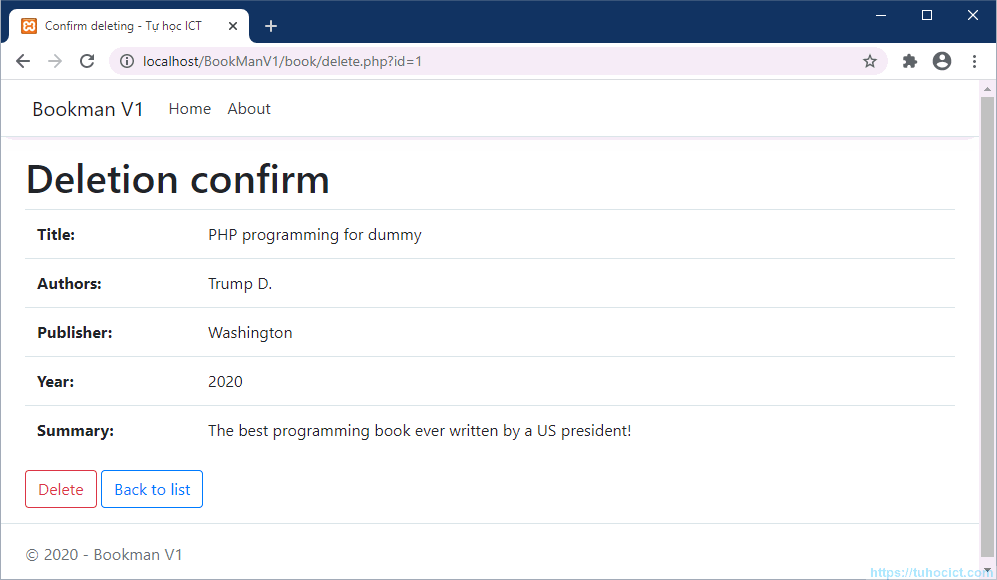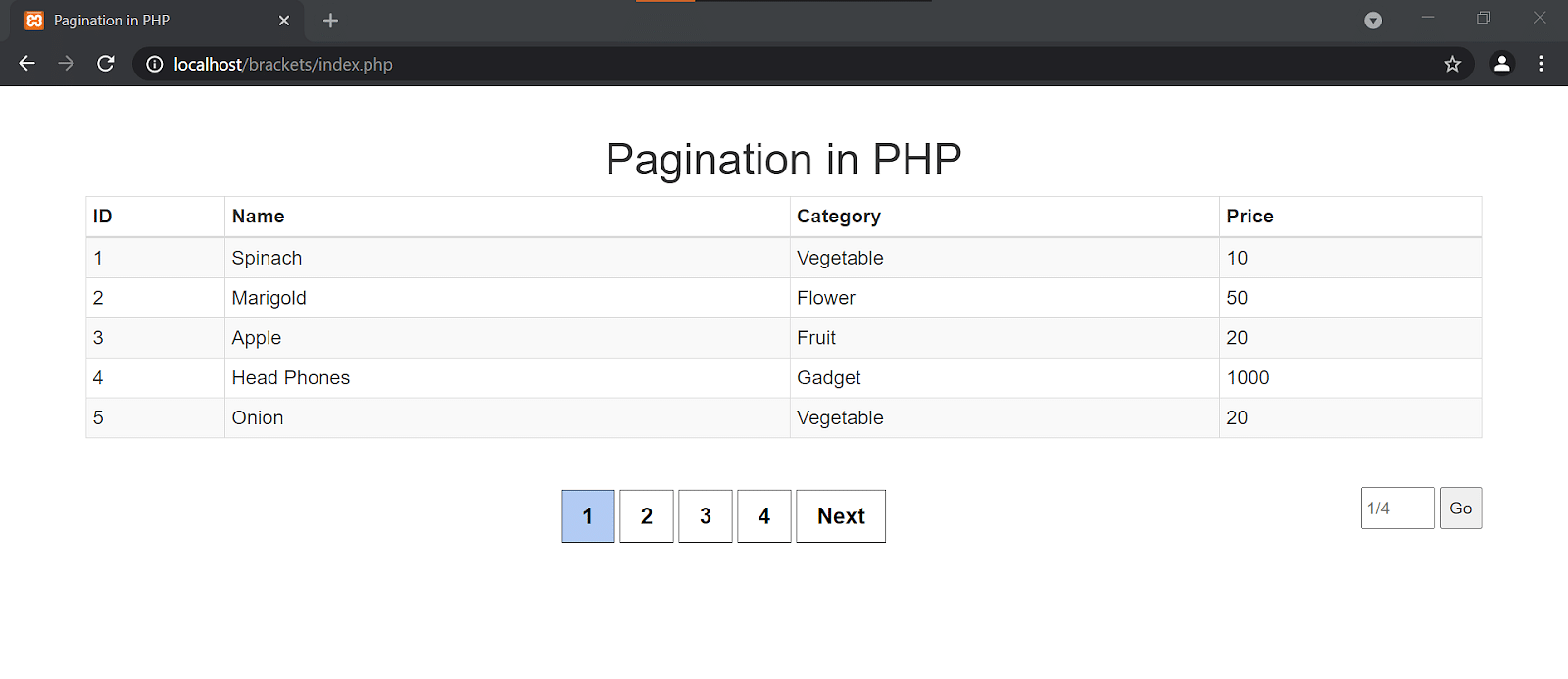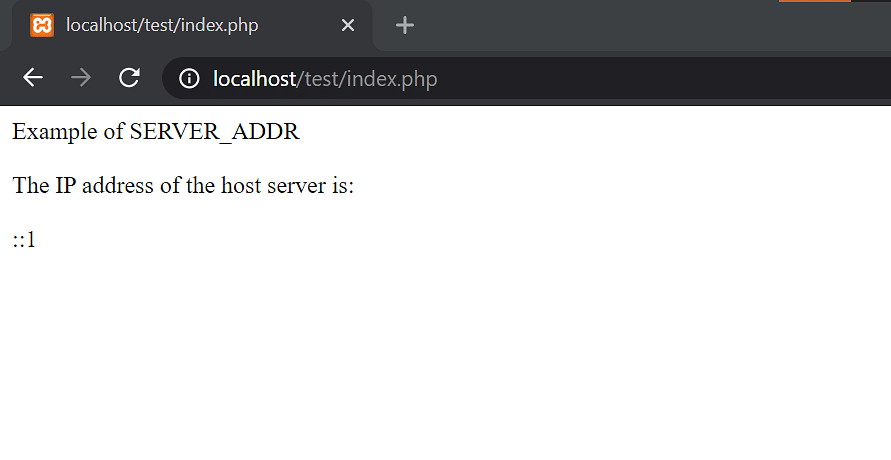Index Php Id 1
Index php id 1 is a common phrase used in web development, particularly in the context of URL structures and query strings. In this article, we will explore the basics of index php id 1, its function and purpose, security considerations, common vulnerabilities, best practices for securing it, troubleshooting errors, and effective ways to optimize it. We will also cover related terms such as Php id 1, Index php id, Inurl index php id uk, Vuln php id 1, Inurl php id, Page php id, View_items PHP id, and Shop php id index php id 1.
Basics of index php id 1:
Index php id 1 refers to the parameter passed through the URL to identify a specific resource or page on a website. The “id” parameter is typically used to specify the unique identifier of a particular item or record in a database. The number “1” after the “id” indicates that it’s the first item in the database or the default landing page. For example, a URL like “example.com/index.php?id=1” would display the details of the first item.
Function and purpose of index php id 1:
The function of index php id 1 is to retrieve and display the content associated with the specified identifier in the URL. It allows developers to dynamically generate content based on the user input or selections. This can be useful for various scenarios, such as displaying product details, user profiles, blog posts, or any other type of data-driven content.
Security considerations for index php id 1:
When working with index php id 1 or any other query string parameter, it’s crucial to consider security vulnerabilities. One of the primary concerns is the risk of SQL injection attacks. If user input is directly embedded in database queries without proper sanitization and validation, it can lead to unauthorized access, data breaches, or data manipulation. To mitigate this risk, developers should always use prepared statements, parameterized queries, or an ORM (Object-Relational Mapping) framework that automatically handles input sanitization.
Another security consideration is the risk of sensitive information exposure. If the id parameter allows accessing private or confidential data, it’s essential to implement proper authorization and access control mechanisms. This ensures that only authorized users can view sensitive information. Additionally, input validation should be performed to prevent unauthorized access attempts or malicious queries.
Common vulnerabilities in index php id 1:
One of the most common vulnerabilities in index php id 1 is inadequate input validation. Failing to validate user input can lead to various attacks, including SQL injection, cross-site scripting (XSS), and remote code execution. Attackers can exploit these vulnerabilities to gain unauthorized access to the system, inject malicious code, or steal sensitive information. Regular security audits and code reviews are essential to identify and fix any security flaws.
Best practices for securing index php id 1:
To enhance the security of index php id 1, follow these best practices:
1. Input validation and sanitization: Always validate and sanitize user input to prevent malicious data from causing security issues. Utilize server-side validation techniques such as whitelisting or regular expressions to ensure data integrity and safety.
2. Prepared statements or parameterized queries: Use prepared statements or parameterized queries to prevent SQL injection attacks. These techniques ensure that user input is treated as data rather than executable code.
3. Principle of least privilege: Implement proper access controls to restrict unauthorized access to sensitive data or functionality. Grant permissions based on the principle of least privilege, ensuring that each user or role has only the necessary privileges for their tasks.
4. Secure coding practices: Follow secure coding practices, such as avoiding the direct execution of user-supplied data and using appropriate escaping or encoding techniques to prevent XSS attacks. Regularly update and patch software libraries or frameworks to fix known security vulnerabilities.
Troubleshooting index php id 1 errors:
When encountering errors related to index php id 1, it’s crucial to identify the root causes for effective troubleshooting. Some common issues and their possible solutions include:
1. Database connection errors: Ensure that the database connection settings are properly configured, and the server can communicate with the database. Check for typos, incorrect credentials, or network issues.
2. Missing or incorrect query parameters: Double-check the URL parameters to ensure they are correctly specified. If the parameter is required but missing, display an appropriate error message. If the parameter value is incorrect, handle it gracefully and provide meaningful feedback to the user.
3. Data retrieval problems: Verify that the specified id exists in the database. Debug the data retrieval process by logging or printing relevant variables to identify any issues with the queries.
Effective ways to optimize index php id 1:
Optimizing index php id 1 can improve the performance and user experience of your website. Consider these tips for effective optimization:
1. Caching: Implement caching mechanisms to reduce the load on your database. Cache the rendered content of frequently accessed pages to minimize the retrieval and rendering time.
2. Database optimization: Optimize your database by indexing frequently queried columns. This speeds up the retrieval process and reduces overhead.
3. Code optimization: Analyze and optimize your code for any performance bottlenecks. Avoid unnecessary database queries, optimize loops, and minimize resource-intensive operations.
4. Content Delivery Network (CDN): Utilize a CDN to distribute your website’s static assets, such as images, CSS, and JavaScript files, across multiple servers worldwide. This reduces latency and improves page load times.
5. Server optimization: Configure your server settings for optimal performance. Consider implementing techniques like gzip compression, browser caching, and load balancing to distribute the workload efficiently.
FAQs:
Q: What does “Php id 1” mean?
A: “Php id 1” refers to the query string parameter used in URLs to identify a specific item or record on a website. The “1” usually represents the unique identifier of the first item in the database.
Q: What is the purpose of “Index php id” in a URL?
A: The “Index php id” parameter is used to specify the identifier of a particular item or resource in a website’s database. It allows developers to dynamically generate content based on the user’s input or selections.
Q: What is meant by “Inurl index php id uk”?
A: “Inurl index php id uk” refers to a specific URL structure that includes “index.php” followed by the “id” parameter and the country code “uk.” It suggests that the URL is used to retrieve information related to a specific item or resource in the UK.
Q: What are some common vulnerabilities with “Vuln php id 1”?
A: “Vuln php id 1” implies a vulnerable PHP script that may be susceptible to attacks like SQL injection, cross-site scripting (XSS), or remote code execution. These vulnerabilities can occur if input validation and user input handling are not properly implemented in the script.
Q: What is the significance of “Page php id” in URLs?
A: “Page php id” is another commonly used query string parameter, similar to “Index php id.” It helps identify the page or resource to display based on the specified identifier.
Q: What is “View_items PHP id” used for?
A: “View_items PHP id” indicates a specific functionality in a PHP application that retrieves and displays detailed information about a specific item. It usually takes an “id” parameter to identify the item.
Q: Can “Shop php id index php id 1” be secure?
A: The security of “Shop php id index php id 1” depends on how well it handles user input and validates data. By following secure coding practices, implementing proper input validation, and sanitization techniques, it is possible to secure the application.
In conclusion, index php id 1 is a commonly used query string parameter in web development to identify specific resources or items. While it offers flexibility and dynamic content generation, it also poses security risks if not implemented securely. By following best practices, performing input validation, and taking proper security measures, developers can mitigate these vulnerabilities and optimize their applications for better performance.
Use Get Request ‘/Index.Php?Id=0’ To Search For The Name Of The User With Id Number 1? Solution
Keywords searched by users: index php id 1 Php id 1, Index php id, Inurl index php id uk, Vuln php id 1, Inurl php id, Page php id, View_items PHP id, Shop php id
Categories: Top 61 Index Php Id 1
See more here: nhanvietluanvan.com
Php Id 1
Introduction
In the realm of website development, PHP (Hypertext Preprocessor) plays a pivotal role as a server-side scripting language. Its versatility and ease of use have made it one of the most popular choices among developers worldwide. One intriguing concept within PHP is the presence of “PHP ID 1.” In this article, we will delve into the details of PHP ID 1, its significance, and the benefits it offers to developers. So, let’s dive in!
What is PHP ID 1?
PHP ID 1 refers to the identifier assigned to the first record in the database table. It is often used as a unique identifier when working with relational databases, such as MySQL. The value “1” represents the first entry that is inserted into the table, thus indicating the primary key of that particular record.
Importance of PHP ID 1
1. Data Integrity: PHP ID 1 ensures the integrity of database records by providing each entry with a unique identifier. This uniqueness allows developers to maintain data integrity throughout the system, especially when multiple tables are linked, or when relationships rely on unique identification.
2. Query Optimization: Having a primary key like PHP ID 1 makes it easier to optimize database queries, as it offers a quick and efficient way to locate specific records. Indexing the primary key will enhance query performance, reducing the time it takes to fetch data from a table.
3. Record Retrieval: PHP ID 1 simplifies the process of retrieving records based on their primary key. Using a simple SQL statement like “SELECT * FROM table WHERE id = 1” allows developers to fetch the data associated with the first record instantly. This proves to be a significant advantage in scenarios where speedy access to specific data is required.
4. Foreign Key References: PHP ID 1 serves as a reference point when working with foreign key relationships. In many cases, tables are linked referencing the primary key of another table. If the primary key is PHP ID 1, developers can conveniently refer to it, making the code more readable and manageable.
Benefits of PHP ID 1
1. Simplicity: The use of PHP ID 1 offers a convenient and straightforward method for uniquely identifying records. This simplicity reduces the complexity of code and enhances overall development efficiency.
2. Reduced Error Possibility: With PHP ID 1 as the primary key, it minimizes the risk of errors related to duplicate or incorrect identifiers. Having a reliable primary key system assures data accuracy and avoids the complications arising from inconsistent records.
3. Increased Scalability: PHP ID 1 facilitates easy scalability of a system. As new records are inserted, they will be assigned incremental identifiers. This facilitates efficient sorting, organizing, and retrieval of data, enabling a system to handle a growing database without performance degradation.
Frequently Asked Questions (FAQs)
Q1. Does PHP ID 1 always have to be used as the primary key?
A. No, PHP ID 1 is not obligatory as the primary key. Developers may choose any unique identifier, typically an integer, based on the requirements of the system.
Q2. Can I change the PHP ID 1 value to a different number?
A. Yes, it is possible to assign a different value as a primary key, but it is vital to ensure uniqueness for each record.
Q3. Are there any drawbacks to using PHP ID 1 as the primary key?
A. While PHP ID 1 offers several benefits, it is essential to consider the potential drawbacks. For instance, if the primary key field is frequently accessed, it may lead to write bottlenecks due to index updates. In such scenarios, alternative primary key systems might be more efficient.
Q4. Are there any alternatives to PHP ID 1 for primary key implementation?
A. Yes, there are alternative primary key implementations available, such as UUID (Universally Unique Identifier) or auto-incremented integer values. The choice depends on the specific requirements of the system.
Q5. Can PHP ID 1 be used with non-relational databases like MongoDB?
A. PHP ID 1 is primarily associated with relational databases that use SQL. Non-relational databases often have different mechanisms for generating unique identifiers.
Conclusion
In conclusion, PHP ID 1 serves as the primary key identifier for the first record in a database table. Its use provides benefits such as data integrity, query optimization, and simplified record retrieval. Additionally, PHP ID 1 facilitates foreign key references, making it a valuable tool for developers working with relational databases. The simplicity, error reduction, and scalability provided by PHP ID 1 contribute to the efficiency and effectiveness of website development. While PHP ID 1 is not obligatory, understanding its significance and benefits can empower developers to make informed decisions when implementing primary keys in their systems.
Index Php Id
Index.php?id refers to a parameter that is often included in the URL of a dynamic website. It typically appears after the index.php file name and is followed by an equal sign and a value. This value, also known as the parameter value, can vary depending on the specific page or content being requested.
The purpose of index.php?id is to enable the dynamic rendering of unique content based on user interactions or input. It serves as a way for the server to understand which specific content to display from a database or content management system (CMS).
When a user accesses a dynamic webpage, the index.php file is executed on the server. Within this file, code is written to analyze the URL and extract the value associated with the id parameter. This value is then used to query a database or CMS, retrieve the appropriate content or data, and dynamically generate the webpage that the user sees.
For example, let’s consider a blog website that uses index.php?id as a parameter. If a user clicks on a link to view a specific blog post, the URL might look like this: www.blogwebsite.com/index.php?id=123. In this case, the index.php file would extract the value “123” from the id parameter and use it to retrieve the corresponding blog post from the database. The webpage displayed to the user would then be populated with the content of that specific blog post.
By incorporating index.php?id as a parameter, websites can easily manage and display countless pages of dynamic content without needing to create individual files for each page. This greatly simplifies the development and maintenance process, as well as enhances the overall user experience.
Frequently Asked Questions about index.php?id:
Q: Is index.php?id used in all websites?
A: No, index.php?id is primarily used in websites that are built using server-side scripting languages like PHP. However, other scripting languages or frameworks may use similar techniques with different syntax.
Q: Can index.php?id only be used for blog websites?
A: No, index.php?id can be used in various types of websites that require dynamic content generation. It can be utilized in online stores to display product details, in news websites to show specific articles, and in forums to view individual threads.
Q: Is there a limit to the number of parameters that can be added after index.php?
A: There is typically no specific limit imposed by the technology itself. However, the server or application hosting the website may have limitations on the maximum length of the URL, which could affect the number of parameters that can be included.
Q: Are there any security risks associated with index.php?id?
A: If not implemented securely, index.php?id can pose security risks, especially if the user input is not properly validated or sanitized. It could potentially expose the website to SQL injection attacks. Therefore, it is crucial to ensure that data passed through index.php?id is properly filtered and validated before using it in database queries.
Q: Can the id parameter value be modified by users?
A: Yes, users can modify the id parameter value, but it should not grant them unauthorized access to other content or sensitive information. It is essential to implement proper authorization and access control measures to safeguard against potential risks.
In conclusion, index.php?id is a valuable tool in web development, allowing for efficient and dynamic content rendering. It facilitates the creation of dynamic webpages by extracting parameter values from the URL and using them to fetch and display specific content. Understanding how index.php?id works provides developers with the flexibility to build websites that can generate unique content based on user interactions.
Images related to the topic index php id 1

Found 21 images related to index php id 1 theme

















Article link: index php id 1.
Learn more about the topic index php id 1.
- Sứ giả Môi trường – Vinahands
- Eurasian Scientific Journal Index
- Danh sách các web bị lỗi lỗi sql injection chưa được fix
- PHPMesFilms 1.0 – ‘index.php?id’ SQL Injection
- Văn phòng Ban Quản lý – BQL Khu bảo tồn biển Cù Lao Chàm
- inurl:product.php?id= – Trang 1 – VNID Jsc
- index.php?ID=01 – PHPBuilder Forums
- Programs – Berkeley Recycling
See more: nhanvietluanvan.com/luat-hoc